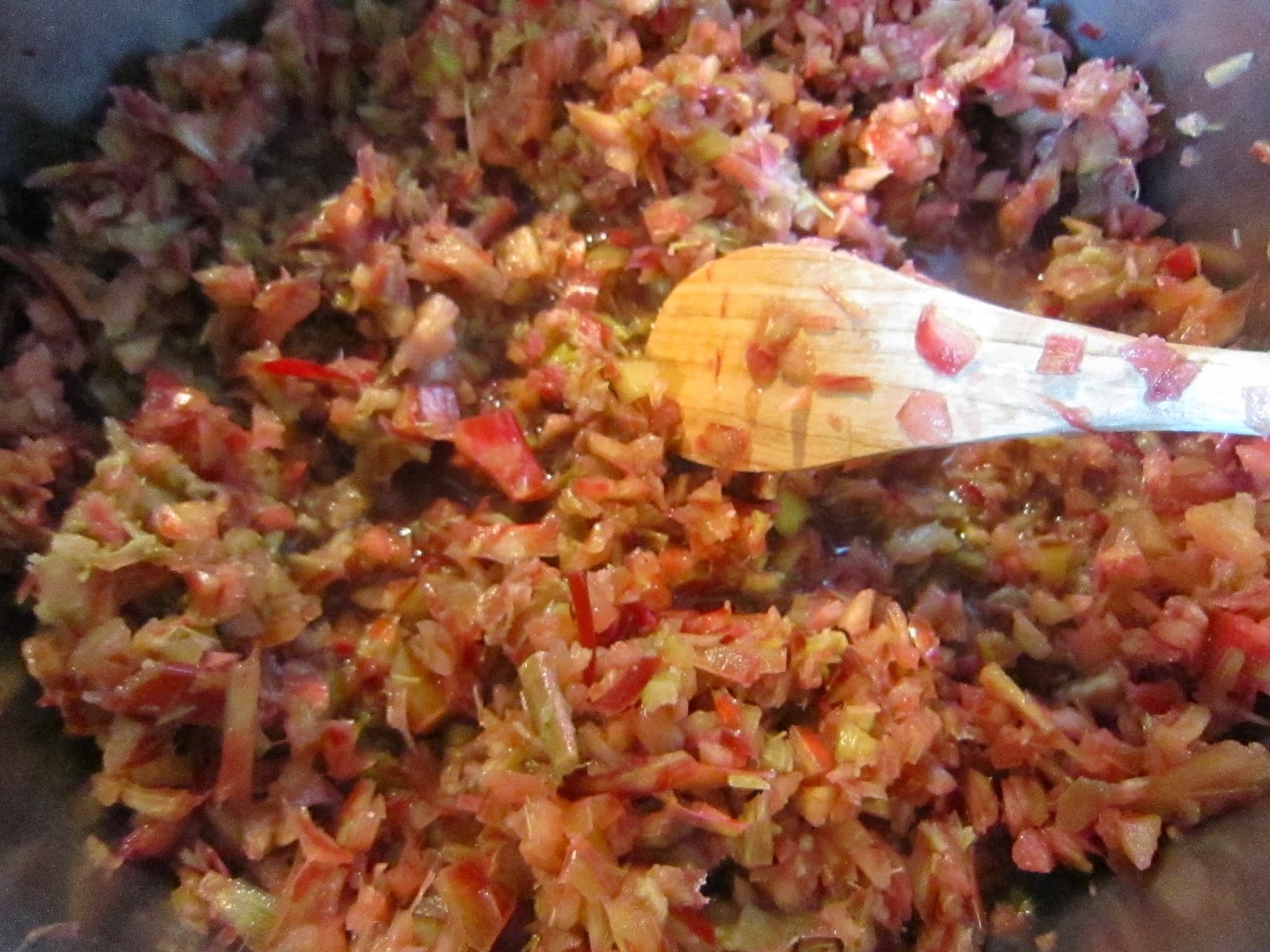 After making my pie last week I ended up with some extra rhubarb. Not quite enough to make jam, but almost. My mom ended up getting some rhubarb from the grocery store so we had enough to make jam.
After making my pie last week I ended up with some extra rhubarb. Not quite enough to make jam, but almost. My mom ended up getting some rhubarb from the grocery store so we had enough to make jam.
Before I go into making jam, lets delve into what rhubarb is exactly. Is it a fruit? a vegetable? According to the internet "Rhubarb is usually considered a vegetable. In the United States, however, a New York court decided in 1947 that since it was used in the United States as a fruit, it counted as a fruit for the purposes of regulations and duties. A side effect was a reduction on imported rhubarb tariffs, as tariffs were higher for vegetables than fruits." According to almanac.com, "Rhubarb is a perennial vegetable, though it is generally used as a fruit in desserts and jams. You only eat the stalks, which have a rich tart flavor. The leaves of this plant are poisonous, so be sure that they are not ingested. Rhubarb is easy to grow, but needs cool weather to thrive." It is usually stewed with sugar or used in pies and desserts. There are also recipes that use it to make savory dishes or you can even pickle it!
The recipe I used is from Kraft. I thought it would really focus on the flavor of the rhubarb, because that is the only flavor in the recipe! So here is my adventure making Rhubarb Jam!
Step 1: Wash the jars, a few more than you think you will need....just to be safe.
Step 2: Place the washed jars in a large pot and bring to a boil to sterilize them...this is also super important!
 |
| There is a measuring cup in there too, it is used to ladle the hot jam out to pour into the jars. |
Step 4: Weigh and rough cut the rhubarb. The recipe calls for about 2.5 lbs of rhubarb, or 4-1/2 cups prepared, so you have to cook it down before you measure it...so we threw the rough cut pieces into a food processor...made it easier
Step 5: Put the rhubarb and 1 cup of water in a pan and cook it down.
Step 6: Measure out exactly 4-1/2 cups of processed rhubarb, put it in a pot, add the Sure-Jell, and the butter and bring it to a boil stirring constantly!
Step 7: I'm sure after reading the recipe you pre-measured the sugar right? I did!!! And once the pectin part is boiling, dump in the sugar! And bring it back to a boil, and the let it boil for exactly 1 minute!
Step 8: This is a big step, this is the canning step, so there are smaller steps within this step...get a plate to set the jars on, a good funnel, pour hot jam into a sterilized jar until it is 1/4" below the rim, carefully wipe the rim and the rings to make sure there is no jam, place a sterilized lid and ring on the jar, finger tight, place to the side and repeat until you have enough to fill the canner, or in our case a very large stock pot. Bring the water to a low boil and place the jars in the water, leave in for 10 minutes.
Step 9: Very carefully take the jars out of the water after 10 minutes and put on a towel, you will want to listen for the pop....watch my video...
Step 10: Let the jam sit out, undisturbed for 24 hours...then you can put it away, it is shelf stable at this point and does not need refrigeration.
Step 11: Clean up...my LEAST favorite part of the whole process...
At least I have some tasty jam to share and enjoy!































